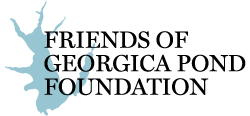The Chapman Perelman Foundation
Water Body Remediation Invitational Summit
East Hampton NY
On March 9th and 10th 2017, the Chapman Perelman Foundation hosted a Water Body Remediation summit in East Hampton, NY. This unique, invitational event convened an interdisciplinary group of worldwide experts to discuss next-generation, systems-based approaches to water body remediation – including leading researchers and practitioners from the fields of environmental engineering, marine biology, landscape architecture, environmental chemistry, ecological restoration and regenerative design.
The summit brought together distinguished experts and guests from a wide array of institutions, including:
- Chesapeake Bay Program Office
- Biohabitats, Inc.
- Rubenstein School of Environmental and Natural Resources at the University of Vermont
- CTO Water Council
- School of Marine and Atmospheric Sciences at Stony Brook University
- AECOM
- Hazen and Sawyer
- Kartik Chandran Laboratory at Columbia University
- Rutgers University
- Sandia Laboratories
- The Nature Conservancy
- Florida Gulf Coast University
- Natural Systems International
- University of North Carolina’s Institute of Marine Sciences
- Clean Earth Inc.
- The Gund Institute for Ecological Economies
- The Town of East Hampton
- Suffolk County
- The East Hampton Town Trustees
- Peconic Land Trust
- Perfect Earth Project
- The Center for Clean Water Technology
- Concerned Citizens of Montauk
- The Surfrider Foundation
- The Rauch Foundation
- DefendH2O
- Fresh Pond, North Haven, NY
- Natural Resource Defense Council (NRDC)
- Group for the East End
- Friends of Georgica Pond Foundation
Suffolk County Executive Steve Bellone kicked off the summit with a welcome and recap of his groundbreaking “Reclaim our Water” campaign.
The emerging action plan for remediating Georgica Pond was presented as a case study to ignite a broader discussion on holistic approaches to water body remediation. This fruitful discussion around potential solutions led to the presentation of a number of creative and interesting ideas for considerations, including cluster systems, permeable reactive barriers, wetland creation, algal harvesting and lake restoration, small diameter sewers, dredging, groundwater treatment, upgrading septic systems, buffer enhancement – and more.
The goal of this summit was to provide stakeholders with knowledge regarding all relevant interventions for the remediation of, and to use any outcomes from this convening as a model for remediation efforts across the greater Long Island region.
For further information visit: https://you.stonybrook.edu/georgicapond/the-team/
